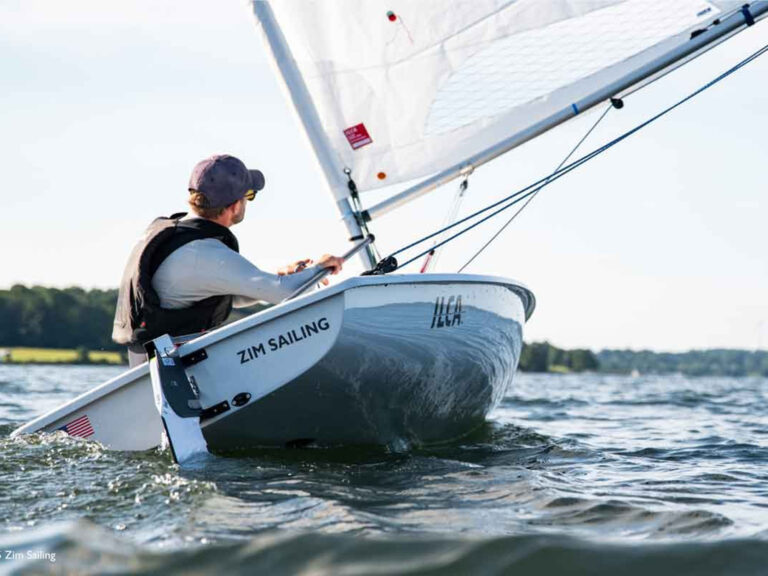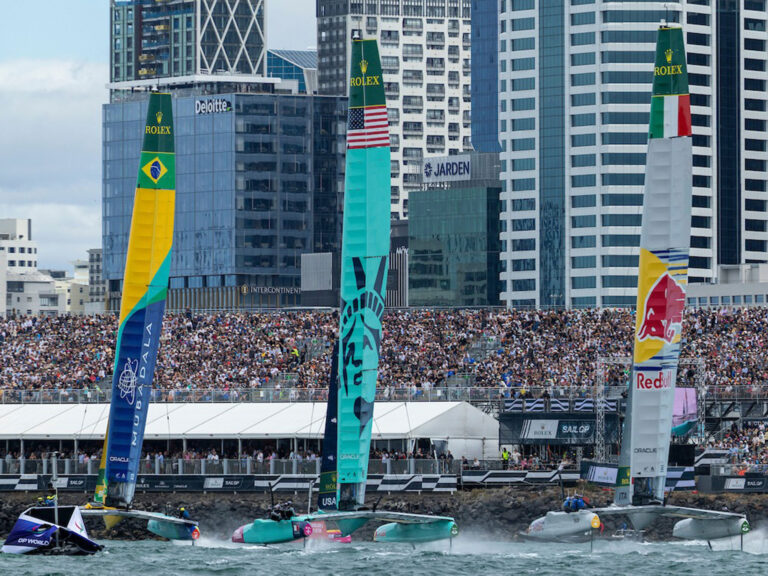We see you are heading back to the Helly Hansen NOOD in St. Petersburg; what keeps bringing you back to this event?
I find the warm weather speaks for itself, and the class supports the event sanctioning it as the Sonar Class Midwinters, a tradition that’s been going on for nearly 30 years. After that, it’s always a unique roster that registers for the event, attracting sailors from the west coast, the south, and, of course, the yanks. There’s a mix of Paralympic and international, too. Then, there are the great social events in and around the regatta and St. Petersburg. The race committee goes a good job getting in competitive races in sometimes challenging and sometimes perfect conditions.
Tell us about you and your Sonar team; you keep at it with mostly the same crew?
Most of the time we are competing as a Paralympic team, and other times with a guest AB (able body) on board. It’s a bit of a challenge because the open completions have a slightly different boat set up than our adapted regattas, so we need a little extra time to set up the boat. There are even times I may a have completely different crew if the demands of the Paralympic campaign gets to be a burden. In those cases we then go through maneuvers as closely as we would with the gimps on board.
Tell us about some of the boat prep tips you have that might help others when approaching this event. What’s your routine?
A lot of time we are traveling a long distance, so before we hit the road we lay on a heavy layer of Joy soap, so that when we arrive we just hose off the road dirt and the clean and polish the boat. We use McLube Speed Polish, and have been using the anti-foul version for regattas longer than three days or in warm climates. If we have any road blemishes, we will prep with wet/dry 800- to 1000-grit, or fill various defects, if we have to. Most of the time, boats haven’t been used in awhile, so it’s a good time to inspect the rigging. I learned this lesson the hard way when one year my upper shroud failed, breaking my mast in 20 knots. It cost me the regatta, and it was a very scary episode.
You know the waters and sailing circle well; what are some tips in relation to performing consistently at this venue? My routine is to check the local weather maps, get the Albert Whitted Airport weather station and study the marine charts and current prediction. North Sails provides an outstanding weather briefing for all race days, but as a creature of habit, I’ve found that few regattas provide this, so I stick to my local routines everywhere I go. By studying the charts, you appreciate the deep-water channels, and the proximity of geographical features that influence the breeze in certain directions.
The only direction not influenced by this is the easterly, on those days, hang on to your hats, we’re going for a ride (lumpy). Obviously, get to the race area early enough to test your predictions on current and geographic influences, on both sides of the course. A tuning partner helps, or just split tacks with a boat that is sailing hard nearby. Come back when they tack and see who gained. Find lobster pots (they’re all over the bay) or government marks to check current, and be careful, they’re long days and it’ll keep changing throughout the day. When in doubt, look at the committee boat. You may see them hanging directly upwind.
Give us some quick tips to sailing the Sonar in the typical light-to-moderate conditions we see in St. Pete. It’s all about gear changing. Crews that are stagnant have a nice ride, but may end up disappointed. My biggest challenge on those days is what to set up for. For us, going from light 5-knots, to a moderate breeze, say 12 knots, is a big difference. Powering up the Sonar can pay dividends. An underutilized tool are the mast blocks; stuff them behind when it goes light and lumpy to give beautiful head stay sag and induced mast bend. Move them back in front to straighten the mast and reduce that headstay sag when breeze gets over 15 knots. In the Sonar class, it’s the only adjustment allowed under sail once racing has started, other than control lines, halyards, etc., so use it when necessary.
Other gear changes we use to balance the boat, besides sheet tension, is our backstay tension, jib-halyard tension (jib-luff tension), outhaul, and then relatively infrequently, the cunningham (over 10 to 12 knots it starts to come in depending on the flatness of the water.
Lastly, crew-weight placement is paramount. We are always trying to drive the boat with weight in light to moderate. Take for example, leeward roundings: my crew will always start turning with weight displacement to leeward, all the while trimming their sails, dousing chute, etc. I loathe driving from the leeward side, but if the crew has an issue, I’ll check the mark is clear, and transfer down to initiate the turn. Once trimmed, the appropriate amount of weather roll then flattens the boat and buys you that clear air to extend, if you need. It’s a big deal.
What are some of the places on shore that you, your team and friends like to hit?
My favorite place to hit, hands down, is Red Mesa Cantina downtown. My days of live music are over, but downtown has it and it’s great.






